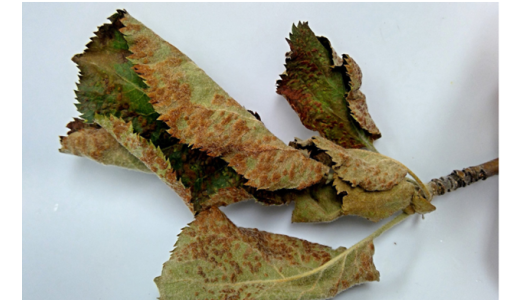
Blister Mites
There have been quite a few samples coming into the Schutter Lab with appleleaf blister mites. These mites are a type of eriophyid mite, which are microscopic and difficult to see with the naked eye. Their hosts are apple, crabapple and pear trees.
 Blister mite damage on the underside of an apple leaf. Photo by W. Crawnshaw, Bugwood.org. |
Biology and Damage: The mites overwinter as adults beneath bud scales. When the buds start to grow in the spring, mites attack the underside of the emerging leaves. Mite feeding creates a "blister" on the leaf surface, and they continue to feed within the tissue of the blister. Blister mites can be misdiagnosed as a disease because their damage presents as brown spots on the surface of leaves. Their activity increases in the summer, and there are usually two or three generations per year. The damage caused by this mite includes buds that are dry and fail to develop, fruit development, curling and blistering of the leaves. The most serious injury is related to fruit development.
 Blister mite damage. Photo by L. Kerzicnik. |
Management: If damage is not too heavy, blister mites can be tolerated because they are primarily cosmetic. Small sections of leaves can be pruned out if it's only on a certain part of the tree. Predatory mites, predatory thrips, and minute pirate bugs are effective natural enemies against these mites, especially later in the summer. If fruit development is affected and the overall health of the tree is declining, chemical treatment might be necessary. Most chemical applications are recommended in the spring. This MSU Fact Sheet provides treatment information.
Marni Rolston
[email protected]